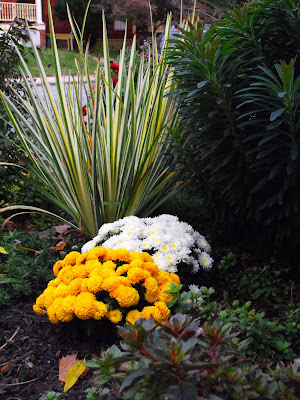“In chaste hearts uninfluenced by the power
of outward change, there blooms a deathless flower.”
--Michelangelo Buonarroti (1475-1564)
We associate New York with many things: the arts, the avant garde, chic boutiques, Broadway, Fifth Avenue, food, gridlock, Macy’s Thanksgiving Day Parade, overcrowding, publishing, skyscrapers, space (or lack thereof), the Twin Towers, Wall Street, wealth, the United Nations, and ever so much more. Lust perhaps belongs on that list, too, though lust and sexual desires more generally may have had a more prominent showing on this list of associations before Koch and Giuliani’s crusade to clean up Times Square and replace the local “Debbie Does Dallas” retinue with Disney.
 Lust: Christians condemn it (Aquinas called it a ‘deformity’, ‘pollution'), Buddhists banish it (any form of desire is the root of suffering), and Hindus decree it a gate to Naraka or hell.
Lust: Christians condemn it (Aquinas called it a ‘deformity’, ‘pollution'), Buddhists banish it (any form of desire is the root of suffering), and Hindus decree it a gate to Naraka or hell.
To us moderns, however, lust assumes a less evocative, less lasciviousness meaning, and a simple search will yield it as a synonym for intense desire, craving, or longing. But, owing to the stigma of its antecedents, even the modern incarnations invariably speak to carnal urges.
And so on a recent day trip to New York, that city’s sin seared into my consciousness, a peculiar rapaciousness overtook me from the depths of my being. I began to lust.
Yes. It began as an inadvertent meeting—as all such romances seem to do. I sauntered into the La Guardia Corner Community Gardens (the southwest corner of LaGuardia and West 3rd) on a lovely Sunday in September, and there he was: a very fine specimen of Japanese masculinity. I gasped quite audibly—so loudly in fact that the woman in several feet in front of me turned and said, “Oh yes, he’s a beauty.”
And then it hit me--or rather he hit me. I lost what felt like my consciousness, and impulsively dropped to my knees to partake in whatever sensory experiences he might permit. And that same woman purred, with a sly smile across her face, “Yes, he has that effect.”
 One needs to do that with Tricyrtis formosana ‘Samurai’ toad lily because the flowers come only in miniature. One really must plant them along the garden path, for even two feet from the path they become lost.
One needs to do that with Tricyrtis formosana ‘Samurai’ toad lily because the flowers come only in miniature. One really must plant them along the garden path, for even two feet from the path they become lost.
And what sparkle he brings to the autumn shade garden; what dazzling display of foliage (reminiscent, I think, of Solomon’s Seal or Disporum flavens Asian Fairy Bells)! He tempts; he performs; he elevates the mood as you stare deeply into his flowers and focus on his chenille-like stigma and contemplate his existence whilst rubbing your fingers along his slightly hairy stems. The whole experience arouses and one cannot help but feel lust surging deep from within, pulsating and running its course through your veins.
Obviously, I am not alone: Michelangelo, strange New York City woman, me, and countless others I presume.
Lust has without doubt been a subtext throughout this blog, and indeed I am convinced that the backbone of any good garden and gardener owes to substantial doses of lust.
Lust in gardening does not share with human romantic or sexual lust. If the adage "you may look as long as you don't touch" applies in the realm of the latter, it most certainly does not apply in the realm of the former. The gardener can lust and touch and obtain and caress as much as s/he desires.
I now search for Toad Lily, my appetite insatiable, my desires as yet unfulfilled. And so I look forward to reporting to you, my dear reader, to Viet, and most importantly to myself that I have “bought myself a little happy,” mortgage notwithstanding.
 An electrical line runs diagonally across my property, powering the house next door. It aerially bisects my stone patio, and thus offers an indispensable clue as to the origins of the errant trio of unusually colored chrysanthemums—coral, lavender, and melon—that appeared just below between rocks. A bird, perching on the wire after a delectable feast, deposited its waste, and voila! A veritable visual treat, an imagined aural amusement, a string trio in C minor—the key of heroic struggle.
An electrical line runs diagonally across my property, powering the house next door. It aerially bisects my stone patio, and thus offers an indispensable clue as to the origins of the errant trio of unusually colored chrysanthemums—coral, lavender, and melon—that appeared just below between rocks. A bird, perching on the wire after a delectable feast, deposited its waste, and voila! A veritable visual treat, an imagined aural amusement, a string trio in C minor—the key of heroic struggle. My intended action comes as an assault on the unintentional, which is what gardening is (try though many gardeners do to produce a verifiable naturalism). And that is why, I think, we should delight in the chance occurrences in the garden.
My intended action comes as an assault on the unintentional, which is what gardening is (try though many gardeners do to produce a verifiable naturalism). And that is why, I think, we should delight in the chance occurrences in the garden. Our pumpkin, of course, could never be tethered. He, like the seeds of the chrysanthemum, appears where he must, and flourishes where he will. We wouldn’t have it any other way.
Our pumpkin, of course, could never be tethered. He, like the seeds of the chrysanthemum, appears where he must, and flourishes where he will. We wouldn’t have it any other way.
































